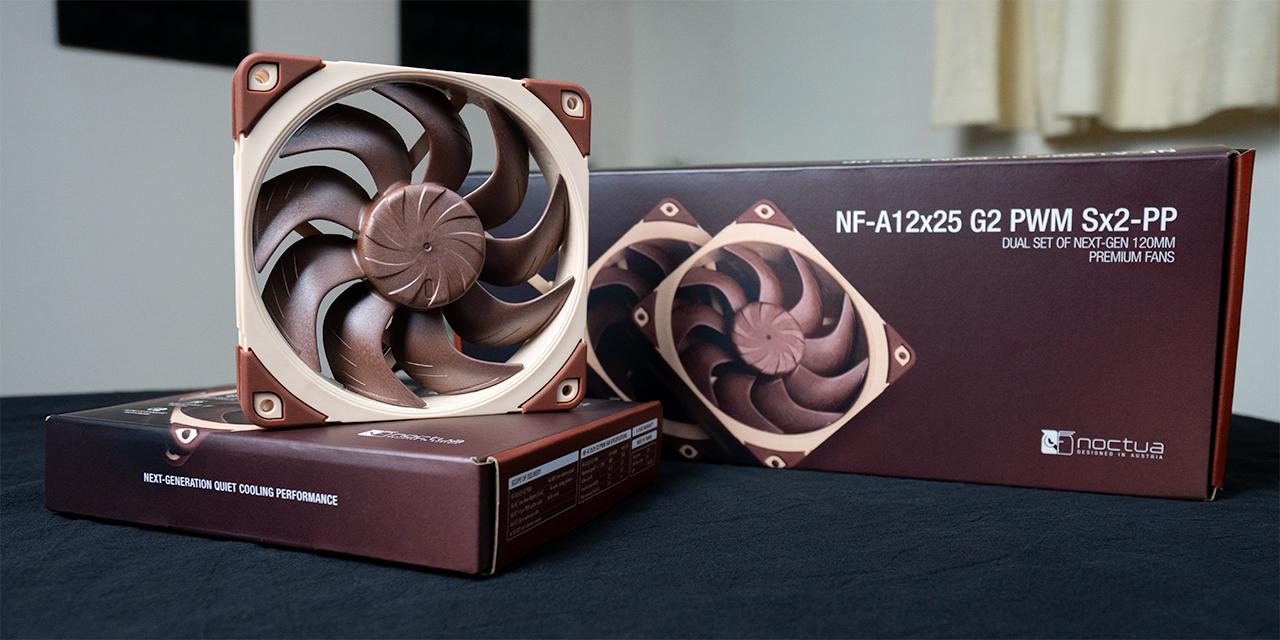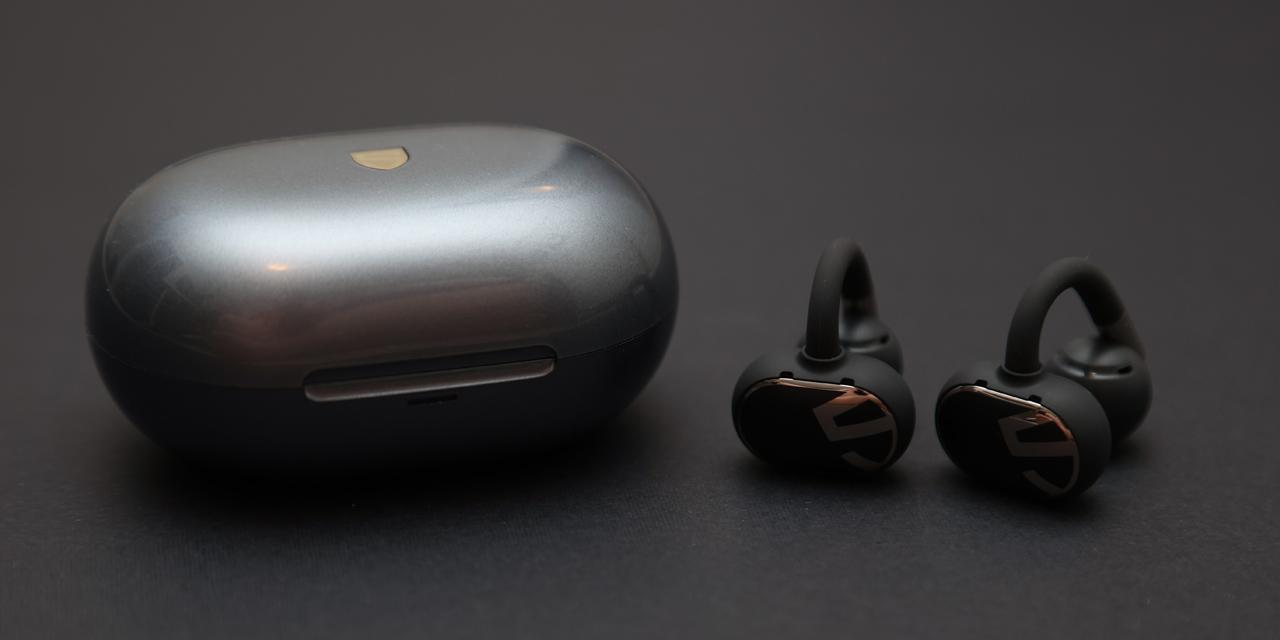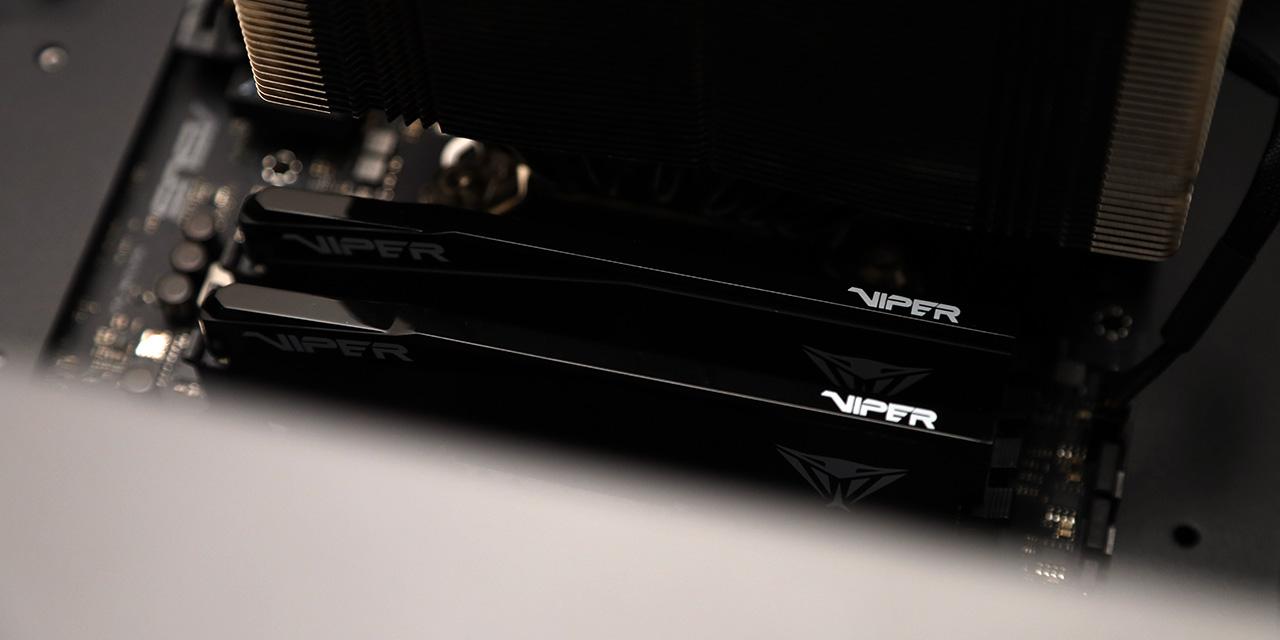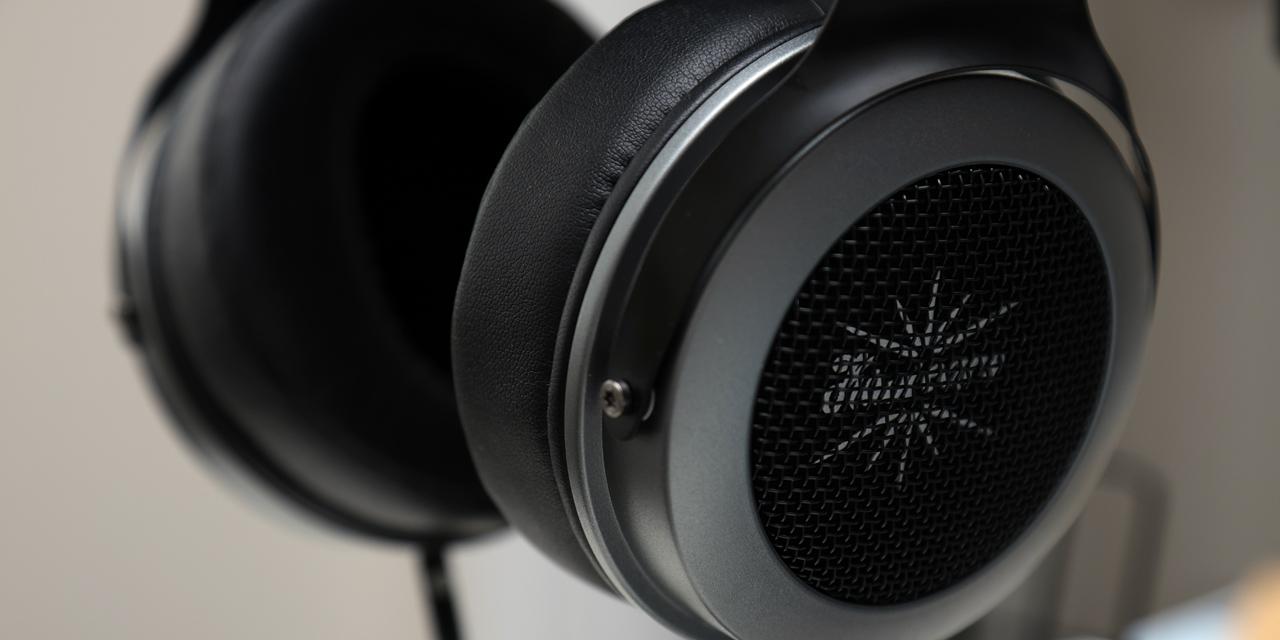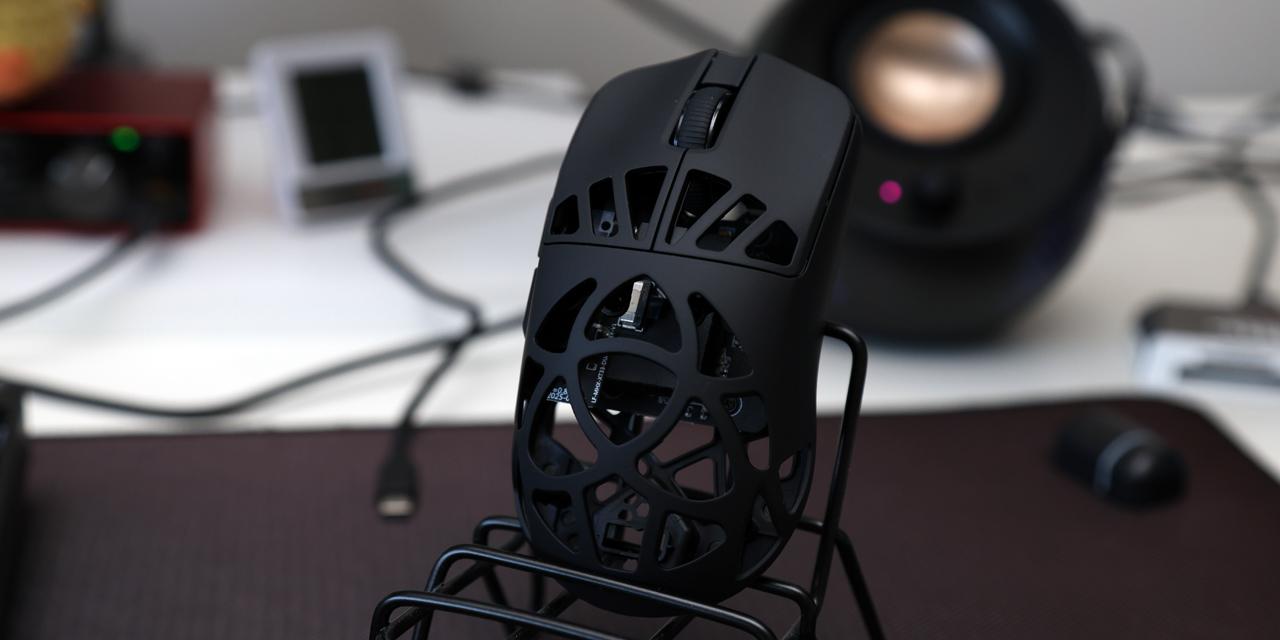Page 2 - A Closer Look - Hardware and Software

The MechLands Vibe75 has a unique look from the outset, even if there are many traditional aspects too. For one, there is a typical frame that goes around the keyboard. Instead of straight angles, there are very notably curved corners, while the edges slope downward and out. The keyboard is very bright in color with its multiple shades of blue on the keycaps and the keyboard itself. The different shades of blue can be found on all non-alphanumeric keys as well as the middle set of function keys. Meanwhile, the white keycaps have blue legends in keeping with the theme. An aluminum border wraps around the sides and top to add a cool-to-touch material around the edges. The top right side has a small screen here by default, although you can swap it out for a traditional volume knob, which is included. Overall, I really like the blue shade of the MechLands Vibe75. It does seem a bit more bulged out with its curved corners, but it provides nice vibes. If you are not a fan of the light blue, the Vibe75 also comes in a red and black model, which looks too gamer-like to me.
In terms of dimensions, the MechLands Vibe75 is 334mm in width, 150mm in depth, and 42mm in height. This height will increase when you kick up the feet underneath, as you will see later. This keyboard is made with ABS plastic and weighs in at an expected mass of 890g. In terms of build quality, the Vibe75 does have a bit of flexing when torqued, but it is minimal. The deck also flexes a bit when pressed down, which is expected of a gasket-mounted keyboard. Overall, it is nothing too spectacular, but almost expected based on its physical materials. The front edge, not counting the keycaps, has a height of around 20mm, which means you can add a palm rest here. Unfortunately, we do not have one included out of the box with the MechLands Vibe75.

The layout of the MechLands Vibe75 is a standard North American QWERTY ANSI layout. It has a total of seventy-nine keys, which is near typical for a 75% size. The layout is easy to adjust to, as most of the keys are where you would expect. The primary difference is on the right side of the Vibe75. Unlike a full-size or tenkeyless keyboard, we do not have a cluster of six keys above the arrow keys. Instead, the Delete, Page Up, and Page Down keys are lined up in one column, while the rest are relegated to secondary functions. Furthermore, the bottom row does have standard spacing with 1.25U keys on all the non-space bar keys, but we are missing the right Alt and Menu/Windows keys. Instead, the arrow cluster takes up this space. Furthermore, this makes the right Shift key smaller.
At the top right corner, there is a small LCD screen that shows a few interesting things. By default, it shows the status of the keyboard, including the time, date, battery life, and indicators. It also shows how it is connected to your computer and what layout it is applied. You can also navigate the menus of the screen to change the lighting effects. Finally, you can make it show an uploaded image file. If you do not like this screen, you can swap it out easily with the included volume knob. Both the screen and the volume knob are held on with a set of pins that slot into one or two rows of pins underneath.

As for secondary functions, none of them are on the keycaps, but you can find these specified in the user manual. To access these functions, start by pressing the Fn key on the bottom right side before pressing the specified key. The first set is found in the top function row. With the Windows layout, F1 and F2 are used to decrease and increase the screen brightness. F3 to F5 open your Task Manager, File Explorer, and Search function, respectively. F6 is used to take a screenshot. All the media keys are found from F7 to F12, and they execute Previous Track, Play/Pause, Next Track, Mute, Volume Down, and Volume Up. The keyboard also supports Mac functions, and they are placed where you would expect on a Mac keyboard.
The next set of secondary functions are used to replace the missing keys with this 75% size. The secondary function of P is used for Print Screen, while the open and close square brackets are used for Scroll Lock and Pause. Insert, Home, and End, are all found on L, semi-colon, and single quote. The Fn + Windows key toggles lock and unlock of this key. Finally, the last set of keys are used for changing the keyboard. Fn + Q is used to pair or connect with the 2.4GHz wireless connection, while W, E, and R do the same for three different Bluetooth connections. If you need to reset the whole keyboard, you can press and hold Fn + Esc for five seconds. Finally, the screen menus can be navigated with Fn + Left and Right, while executing screen functions is done with Enter.

At the back, there are two switches to make further modifications to the MechLands Vibe75's operation. On the left side, there is a toggle to choose between Windows and Mac keyboard layouts. On the opposite side, there is a three-position switch to choose the connection mode. This includes 2.4GHz over the wireless USB transmitter, wired connection, or one of three Bluetooth connections. MechLands does not specify what version of Bluetooth is implemented on the Vibe75. When the keyboard connects with USB, whether wireless or wired, it will report at a 1000Hz rate, while Bluetooth is 125Hz. I did not notice any lag when using the Vibe75 with the wired or wireless USB connection, but there was a bit of perceived lag over Bluetooth. However, this lower reporting rate will help with battery life.
Inside, the MechLands Vibe75 contains a 4000mAh battery. In our testing, we found some interesting battery life results. MechLands does not provide any estimates, but with the RGB lights fully on, the keyboard only lasted for two days before needing a recharge, which is low. Without any lights on, this extended to two weeks before needing a recharge, which is a passable result. To aid in the longevity, the keyboard automatically sleeps when it is not used. Once you press any key, it will automatically wake back up from sleeping. I found this process to be smooth, and it did not take too long to wake up.

The bottom of the MechLands Vibe75 is clean with a few interesting elements. The first one is the metal plate in the middle, which has the product name and description etched into it. It also states this was made in China. Each corner has rubber padding to keep the keyboard in place. This ensures the Vibe75 does not easily move about. On the top corners, there are a pair of paired extending feet. This provides a total of three different incline levels, letting users choose how high or low they want their keyboard to sit. All the feet are rubber-tipped to provide a grippy hold to its surface when inclined. Under one of the feet, a small hole is present to hold the USB transmitter. This is especially handy, so you do not accidentally lose the short connector.

As you can see, I did end up buying a desk mat from the Genshin Impact PC bang, which was one of the few things I bought for myself while in Korea. Thankfully, the MechLands Vibe75 in light blue fits very well with this whole feel, especially with its color. I really liked the cool-to-touch surface on its aluminum sides. In terms of layout, everything was typical for me, but some may not like the shorter right Shift key. If you have bigger hands, you may accidentally hit the Up arrow instead. I also ended up using the volume knob in the top corner, as I prefer this.
As for the typing experience, the MechLands Vibe75 set an excellent precedence for what I think all mechanical keyboards should sound like. This is a bit subjective, but if you are looking for a satisfying thock and press while maintaining a smooth travel, the setup of the Vibe75 is superb. Indeed, each keystroke travel is smooth and ends in a dampened and hearty sound. Each press does not sound hollow, but instead has a solid feel and audible response. Longer keys like the space bar and Enter do have a slightly different sound with a deeper pitch, but they still sound consistent with the rest of the keys. The stabilizers are clearly lubricated or dampened well, so they do not rattle.

The backlight on the MechLands Vibe75 was a bit less impressive given its double-shot PBT keycaps with no shine-through legends on the keys themselves. This meant the lights were more of a under glow. The lights on the Vibe75 are facing south, which means they will be a bit more visible to the user. The lighting options are typical with different effects, including rainbow, static, dynamic, and reactive modes. All of these can be configured through the software or by navigating the screen menus. At maximum brightness, the lights are vibrant, but they also use a sizable chunk of battery life. The only lighting shortcuts you will need to know are secondary functions of the up and down arrow, which are used to increase or decrease the brightness, respectively. Otherwise, the screen's menu lets you choose between the effects, brightness, speed, and colors, if applicable. You can also change these settings in the software.

The software utility to control the MechLands Vibe75 is a standalone application available through MechLands' website. It is a 6.86MB compressed ZIP file that can be extracted and installed onto your system. Unfortunately, it is not a polished product, with several visual bugs and minor spelling errors. All the menus can be found on the left side menu. This includes setting up profiles, macros, lighting effects, and other global settings. Interestingly, there were multiple pages for lighting modes, as this included setting up the lights to react to music playback as well as other things. It is not clear why they separated the effects into several pages. You can also update the firmware for this keyboard, but I did not end up needing to do so. Overall, the utility is functional enough, but it felt quite clunky to use. If you do not need to use any of these functions, I would avoid downloading or installing it.
Page Index
1. Introduction, Packaging, Specifications
2. A Closer Look - Hardware and Software
3. A Closer Look - Disassembly and Internals
4. Conclusion
